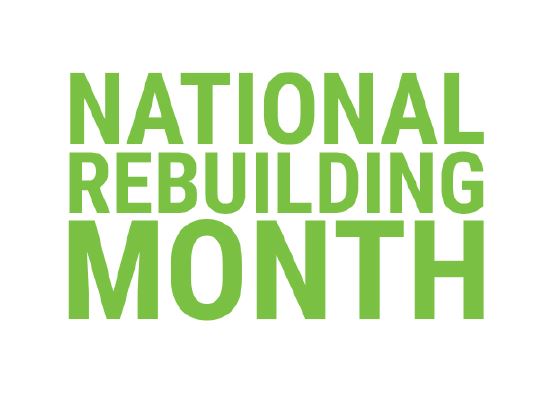
How Proper Insulation Can Boost Comfort in Littlestown Homes This Winter
You’ll notice a dramatic improvement in your Littlestown home’s comfort by focusing on proper insulation, especially in your attic where up to 25% of heat can escape. Meeting the recommended R-49 attic value and R-19 wall value will maintain consistent indoor temperatures while reducing heating costs. Start by addressing air leaks and adding weatherstripping around windows and doors. Our thorough guide examines additional techniques to maximize your home’s thermal efficiency this winter.
While Pennsylvania winters can be harsh, proper insulation in Littlestown homes substantially reduces energy costs and improves indoor comfort. You’ll find that starting with attic insulation provides the most significant impact, as up to 25% of your home’s heat can escape through an improperly insulated attic. Professional installation of fiberglass or cellulose insulation, coupled with proper basement sealing, creates a complete thermal envelope that protects your living spaces from temperature fluctuations.
Your home’s insulation effectiveness is measured by its R-value, which indicates thermal resistance. For Littlestown’s climate zone, you’ll need a minimum R-value of R-49 in your attic and R-19 in your walls. When upgrading your insulation, it’s essential to address air leaks first, as even the highest-rated insulation won’t perform effectively if cold air infiltrates through gaps and cracks.
Weather stripping around windows and doors greatly improves your home’s thermal barrier. You’ll want to inspect these areas annually, replacing worn materials and addressing any visible gaps. Many homeowners find that homepage can dramatically improve energy efficiency when properly installed. Modern weather stripping options include vinyl, foam, and metal variants, each suited to different applications and offering varying degrees of durability.
Wall insulation plays a critical role in maintaining consistent indoor temperatures. If you’re experiencing cold spots or drafts, you might need to add blown-in insulation to your exterior walls. This process involves creating small holes in your walls, through which insulation material is blown into the cavity spaces. While this requires professional installation, it’s a worthwhile investment that typically pays for itself within three to five years through reduced heating costs.
Don’t overlook your pipes and ductwork when addressing insulation needs. Properly insulated pipes prevent heat loss and protect against freezing, while insulated ductwork ensures your heated air reaches its intended destination without losing temperature along the way. You should wrap exposed pipes in unconditioned spaces with foam pipe insulation and seal duct joints with mastic sealant or metal-backed tape.
Consider installing a programmable thermostat to maximize the benefits of your improved insulation. By automatically adjusting temperatures based on your schedule, you’ll maintain comfort while optimizing energy usage. Modern smart thermostats can learn your preferences and adjust accordingly, potentially saving an additional 10-12% on heating costs.
Regular maintenance of your insulation system ensures long-term performance. You should inspect your insulation annually for signs of moisture, compression, or pest activity. If you notice any issues, address them promptly to prevent deterioration of your home’s thermal barrier. Remember that proper ventilation works hand-in-hand with insulation – make sure your attic has adequate airflow to prevent moisture buildup while maintaining its insulating properties.
Frequently Asked Questions
How Often Should Home Insulation Be Replaced or Upgraded?
You’ll need to check your insulation every 15-20 years for the typical replacement timeline, though material lifespan varies. Most homeowners benefit from consulting Littlestown insulation services for specific recommendations based on their climate zone and insulation type. Replace it sooner if you notice dampness, settling, or reduced effectiveness.
What Signs Indicate Poor Insulation Besides High Energy Bills?
Several signs beyond high energy bills can indicate poor insulation in your home. These include uneven temperatures between rooms, moisture stains appearing on walls, and drafty areas near windows and doors.
Your walls might feel cold to the touch during winter months, which is a direct indication of insufficient insulation. Many homeowners discover this issue when conducting home energy audits that reveal thermal weaknesses in their building envelope. Additionally, ice dams forming on roofs and frozen pipes during cold weather are serious warning signs that your insulation isn’t performing adequately.
Can Adding Insulation Help Reduce Outside Noise in My Home?
Yes, you’ll reduce external noise substantially when you add insulation. Different materials like fiberglass and foam offer varying sound dampening properties. Homeowners seeking effective solutions often turn to insulation experts Littlestown PA for guidance on the best insulation options for their specific noise concerns. Professional installation techniques guarantee maximum noise reduction between your interior and outdoor spaces.
Is It Possible to Over-Insulate a House?
Yes, you can over-insulate your home, leading to moisture accumulation between walls and potential HVAC strain. You’ll need proper ventilation and balanced insulation levels to avoid these harmful issues.
Over-insulation creates an extremely tight building envelope that prevents natural air exchange. This situation can trap moisture inside your home, creating ideal conditions for Insulation Littlestown that can damage structural elements and affect indoor air quality. Proper mechanical ventilation becomes essential when adding extensive insulation.
Does the Color of Insulation Material Affect Its Performance?
You’ll find that color doesn’t affect your insulation’s performance, as thermal emissivity and color reflectivity only matter for exposed surfaces. What counts is the material’s internal structure and installation quality.
Professional installers understand that proper installation is crucial for maximizing energy efficiency in your home. Many homeowners are turning to best insulation Littlestown for detailed specifications and installation guides that ensure optimal thermal resistance regardless of the insulation’s color.
Conclusion
Proper insulation is your home’s winter armor, protecting against the harsh Pennsylvania cold. You’ll notice immediate benefits in both comfort and energy costs when you invest in quality insulation for your Littlestown residence. Many homeowners find that working with Littlestown insulation services provides them with expert guidance on selecting the right materials for their specific needs. By addressing air leaks, upgrading attic insulation, and insulating pipes, you’re creating a more efficient living space that maintains consistent temperatures. Don’t let another winter pass without maximizing your home’s insulation potential.


